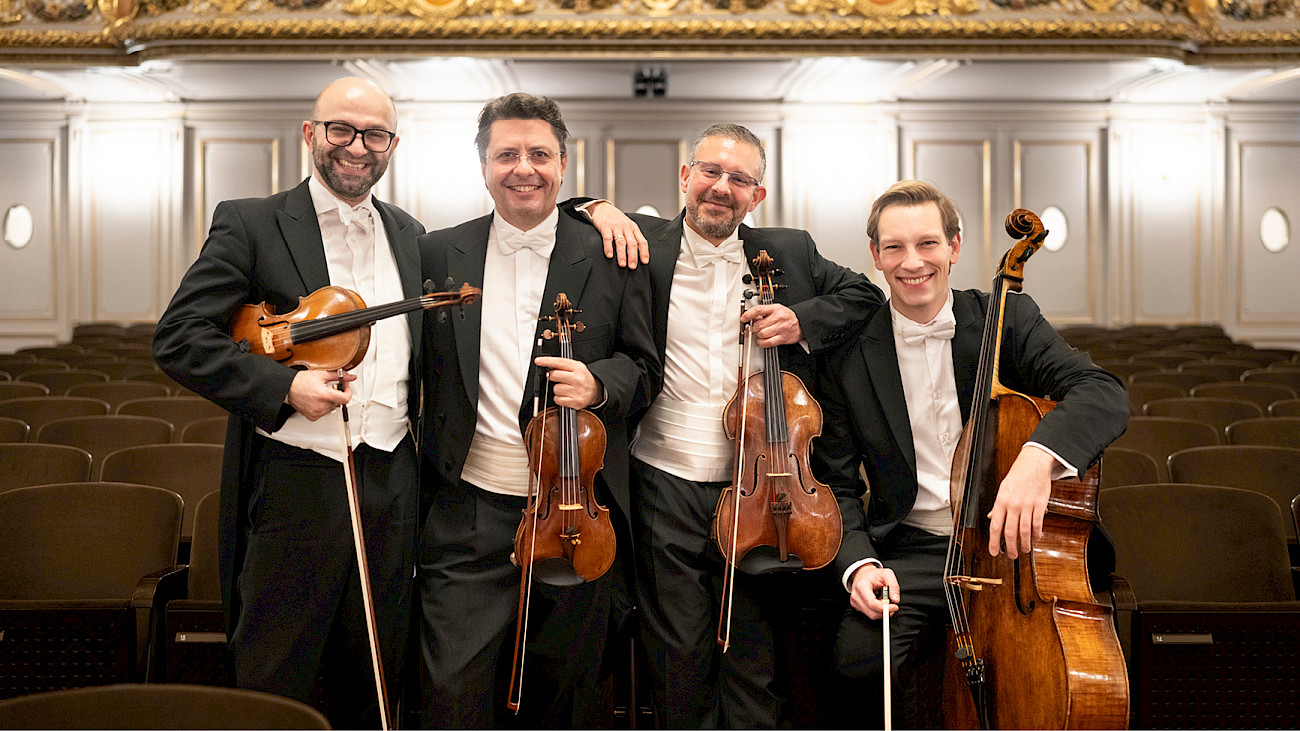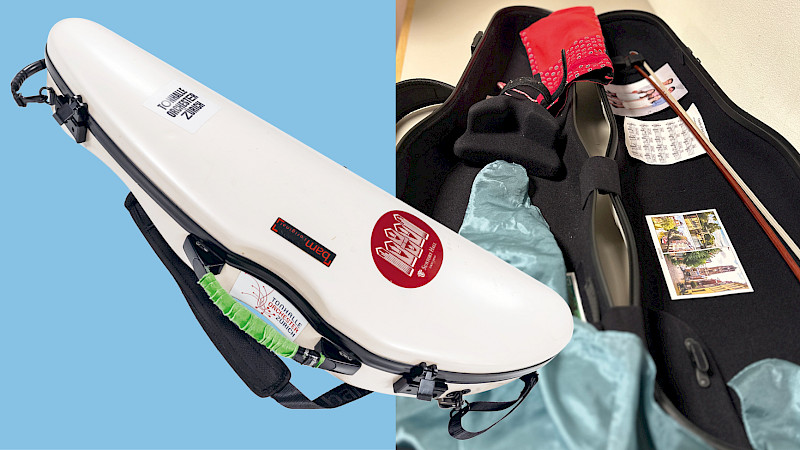
Leaders among themselves
Four leaders from the Tonhalle-Orchester Zürich present themselves as a string quartet for the first time – with works by Shostakovich, Dessner and Haydn.
When the musicians of the Tonhalle-Orchester Zürich perform, it is usually in a large hall and with a large orchestra. However, various concert formats also allow the orchestra members to create their own concert programmes in a chamber music setting: The violinists Klaidi Sahatçi and George-Cosmin Banica, the violist Gilad Karni and the cellist Paul Handschke are now also doing this.
Requiem and sunrise
On 20 June 2024, at the suggestion of Gilad Karni, the four will devote themselves particularly intensively to the theme of "Darkness and Light", which characterises the chamber music lunch concerts in the current season. Shostakovich's String Quartet No. 8, which the composer conceived as his own requiem, marks the beginning of the programme. Haydn's String Quartet op. 76/4 - the so-called "Sunrise" Quartet – will be heard at the end of the programme. The "cold, dark, grey and black harmonies" of Shostakovich, as Gilad Karni describes them, are thus contrasted with the rising sun composed by Haydn. A contrast that is particularly evident in the beginnings: Both quartets begin with the violin hovering above the other instruments. Between these works, there is Bryce Dessner's "Little Blue Something", which is perhaps suitable as a pivotal point precisely because the title alone does not allow any real categorisation.
What does a leader do?
With this programme, the four musicians face a challenge that they overcome as a freshly assembled ensemble. They have come together in this formation explicitly for the concert, but they also work together regularly in the orchestra – not as chamber musicians, but as section leaders. As such, they are each responsible for their own string section and perform a range of tasks that go far beyond the interpretation and realisation of their respective voices. For example, it is important to harmonise the upstrokes and downstrokes with the bow within the group – in other words, to ensure not only a uniform sound, but also a uniform movement pattern. It is also important to organise the group musically and to play the solos "that then have to be delivered", as Paul Handschke puts it.
However, the respective instrumental groups are not alone in the orchestra, but occupy an equal position within the entire ensemble. This requires a high degree of coordination, which depends heavily on the conductors, but is also based on communication between the section leaders. The movements are inevitably coordinated between the groups, explains Gilad Karni, as are the dynamics in the entire string section: "Sometimes you ask another group to play a little softer because we have the melody." Or both groups play the same thing and both have a pianissimo: "If a section leader then realises that the different groups are playing differently in terms of dynamics, this also needs to be clarified."
Equal rights times four
So when concertmaster Klaidi Sahatçi, 2nd concertmaster George-Cosmin Banica and section leaders Gilad Karni and Paul Handschke start rehearsing for this lunch concert, they are by no means strangers to each other. However, the position of section leader cannot be compared with working as a chamber musician. Despite certain parallels, making music as a chamber musician works completely differently. Although communication is just as essential, "there is no hierarchy, it doesn't matter what tasks you have in the orchestra," explains Paul Handschke. What's more, here you are "alone and exposed", says Gilad Karni: unlike in the orchestra, where you are part of a larger whole.
"There is no hierarchy in chamber music, it doesn't matter what tasks you have in the orchestra. You look at where each person stands for themselves and where you are already on a common denominator. Then you just have to walk the path together."
Paul Handschke, solo violoncello
So when it comes to chamber music, the four of them leave their work in the orchestra to one side and start from "zero" when interpreting the works, as it were, explains Paul Handschke, because first "you look at where each person stands for themselves and where you are already on a common denominator. Then you just have to walk the path together". Both Karni and Handschke emphasise that they are all on an equal footing: without a conductor, every interpretation approach has the same right to exist in this formation.
"Dedicated to my memory"
Paul Handschke finds it "extremely exciting to bring a Haydn together with a Shostakovich". Gilad Karni immediately thought of Shostakovich's String Quartet in C minor and Haydn's String Quartet in B flat major when he heard the programme. The contrast between the two works exists on different levels. Shostakovich wrote the quartet, at least as he reported afterwards, with the intention that it should be "dedicated to my memory" – so that at least one such work would exist.
It already reveals a profound sense of shock, which "also pushes the musicians to their physical limits", as Paul Handschke describes his previous experience with the quartet. In contrast, the epithet of Haydn's string quartet conveys a splendour, a radiance, which can probably appear all the more powerful after the pause with the work by Bryce Dessner and concludes the concert with "optimism, with a new day", as Gilad Karni describes the end of the "Sunrise" quartet.
Who knows, perhaps this contrasting concert will also be the beginning of something new for the quartet.
Translated with DeepL.com





